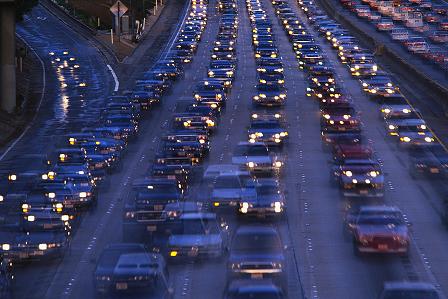Lane splitting is riding your bike between lanes, including maneuvering between lanes of slow or stopped traffic. It’s also called filtering, stripe riding, and white lining.
Laws vary, but generally, lane splitting is not allowed in most areas of the U.S., with the exception of California. Some states do not specifically ban lane splitting, but have other laws in place that effectively condone or forbid it. South Carolina specifically prohibits lane splitting. Motorcycles are entitled to a full lane just as cars are, and motorcycles can travel two abreast in a single lane. Check with law enforcement in your state.
Some of the dangers of lane splitting include . . .
- Car doors opening suddenly, causing loss of control.
- Cars changing lanes without warning or signals.
- Hands, dogs, or objects coming out of windows.
- Drivers of larger vehicles not seeing you.
- Drivers not seeing you at intersections and turning.
If you split lanes, most of these dangers can be avoided by being aware of cars around you, adjusting your speed to conditions, staying out of drivers’ blind spots, wearing bright clothing, and making noise when you’re moving. When you stop, stay in front or behind a car, and always make sure drivers can easily see you. At intersections, always assume a car will turn and stay away from the side. Remember, cars cannot see you as easily as you can see them.
While drivers and law enforcement consider lane splitting dangerous (we do too), proponents of lane splitting say that it reduces rear-end collisions for bikes and reduces traffic congestion. Opponents say it is dangerous and doesn’t offer any real congestion relief because of the low numbers of motorcycles. Unfortunately, in case of accident, riders are often deemed at fault if the crash occurs while lane splitting, even in areas where it’s legal.
Do you split lanes, and why or why not?


